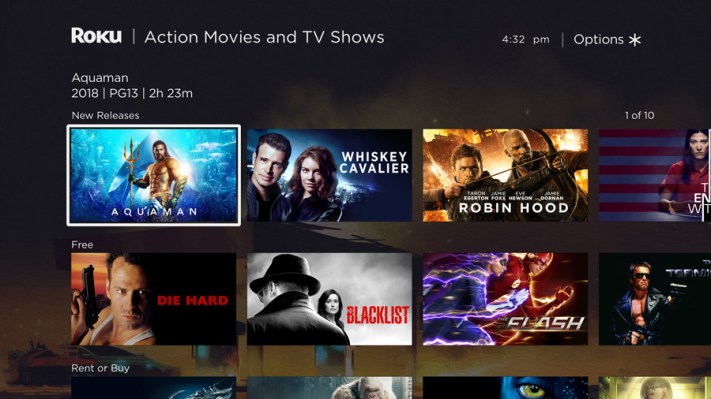Roku has been getting more serious about its ad business, and today it’s launching a new tool designed to make advertisers comfortable with moving their spending over from traditional TV.
Alison Levin, Roku’s vice president of ad sales and strategy, pointed to data from Magna Global estimating that while over-the-top viewing accounts for 29% of all TV watch time, it only represents 3% of TV ad budgets. She argued that this is a wasted opportunity for advertisers because they’re struggling to reach cord-cutters and “light TV viewers.”
Why is ad spend lagging? The problem, Levin said, is “a lack of tools to understand that shift.”
“Streaming is mainstream — brands need to shift to OTT to become whole again and find the consumers they’ve lost on linear,” she said. “Roku as a platform is really uniquely positioned to solve this problem. We do understand and know the viewership pattern of the largest streaming platforms, which allows us to not only help brands find an audience, but also understand the landscape.”
The company’s new Activation Insights tool uses data from Roku’s 29 million users to determine the audience that an advertiser is already reaching through linear TV, plus the additional audience that it could be reaching by advertising on OTT and therefore the optimal ad spend on the Roku ad platform (which includes the ad-supported Roku Channel and other apps).
For example, the company says it’s already found that 86% of viewers between the ages of 18 and 49 who saw a Baskin-Robbins ad on Roku had not seen the ad on linear TV, leading to 10.6% incremental reach. Meanwhile, 81% of viewers between 25 and 54 who saw a RE/MAX ad on Roku had not seen the ad on linear TV, leading to 9.2% incremental reach.
When asked about advertisers that may want someone to independently verify Roku’s data, Levin said the company is “committed to working with third-party research partners.” However, those partners aren’t currently working on Activation Insights because “to date, there hasn’t necessarily been a third-party partner, a sophisticated partner [to help us] understand incremental and unduplicated reach.”
